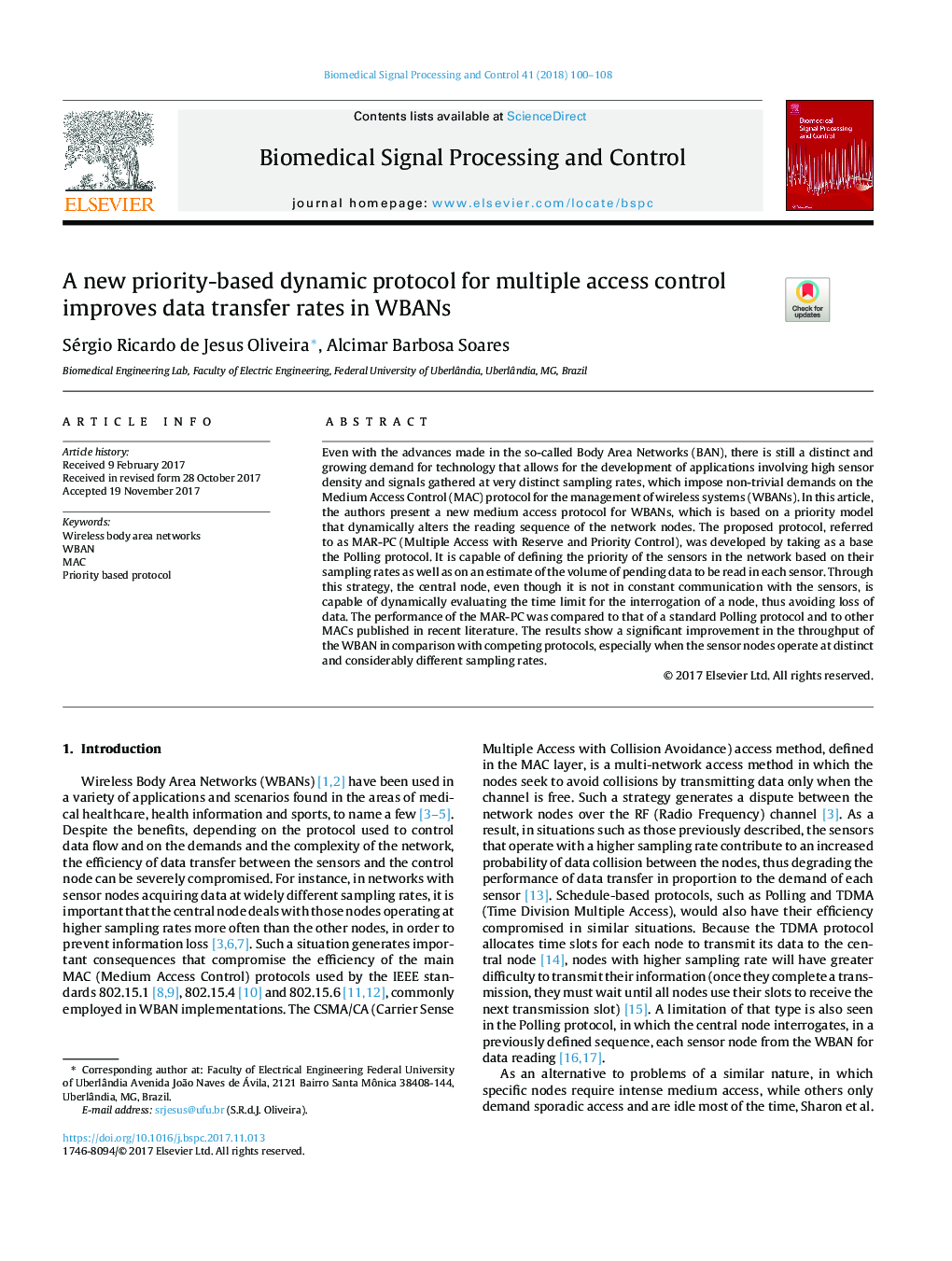| Article ID | Journal | Published Year | Pages | File Type |
|---|---|---|---|---|
| 6950953 | Biomedical Signal Processing and Control | 2018 | 9 Pages |
Abstract
Even with the advances made in the so-called Body Area Networks (BAN), there is still a distinct and growing demand for technology that allows for the development of applications involving high sensor density and signals gathered at very distinct sampling rates, which impose non-trivial demands on the Medium Access Control (MAC) protocol for the management of wireless systems (WBANs). In this article, the authors present a new medium access protocol for WBANs, which is based on a priority model that dynamically alters the reading sequence of the network nodes. The proposed protocol, referred to as MAR-PC (Multiple Access with Reserve and Priority Control), was developed by taking as a base the Polling protocol. It is capable of defining the priority of the sensors in the network based on their sampling rates as well as on an estimate of the volume of pending data to be read in each sensor. Through this strategy, the central node, even though it is not in constant communication with the sensors, is capable of dynamically evaluating the time limit for the interrogation of a node, thus avoiding loss of data. The performance of the MAR-PC was compared to that of a standard Polling protocol and to other MACs published in recent literature. The results show a significant improvement in the throughput of the WBAN in comparison with competing protocols, especially when the sensor nodes operate at distinct and considerably different sampling rates.
Keywords
Related Topics
Physical Sciences and Engineering
Computer Science
Signal Processing
Authors
Sérgio Ricardo de Jesus Oliveira, Alcimar Barbosa Soares,
